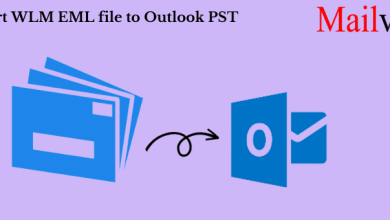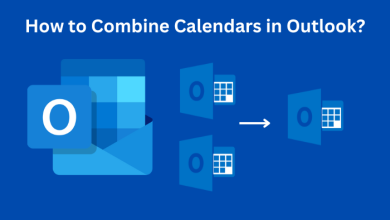Seamless Onboarding: Crafting a Joining Letter with HRMS Efficiency

The journey of a new employee begins the moment they accept a job offer. In that critical juncture between acceptance and their first day, effective communication and preparation are paramount. One vital component of this process is the joining letter. Traditionally, this letter was a paper document, painstakingly created and distributed by HR teams. However, with the advent of Human Resource Management System (HRMS) software, the creation and distribution of joining letters have become more efficient, transparent, and seamless.
In this article, we will delve into the world of crafting a joining letter format with HRMS efficiency, exploring how this modern approach is transforming the onboarding experience for both HR professionals and new hires.
The Importance of the Joining Letter
Before we discuss the role of HRMS in streamlining joining letters, let’s understand why this document is so crucial in the onboarding process.
Formal Welcome:
A joining letter serves as an official document extending a warm welcome to the new employee. It sets a positive tone for their journey with the organization.
Clarity and Expectations:
It outlines essential details, such as the start date, job title, compensation, and reporting structure. This clarity is vital for both the employee and the HR team.
Legal Agreement:
The joining letter often contains terms and conditions of employment, including company policies and compliance requirements.
Documentation:
It provides a written record of the terms agreed upon during the hiring process. This documentation can be invaluable in case of disputes or misunderstandings.
Challenges of Traditional Joining Letters
Traditionally, creating and distributing joining letters posed several challenges for HR professionals:
Manual Work:
Drafting joining letters manually for each new employee consumed a significant amount of time and effort.
Errors and Inconsistencies:
The manual process was prone to errors and inconsistencies in formatting and content.
Distribution Delays:
Physical distribution of printed letters often led to delays, especially for remote or international hires.
Lack of Transparency:
New employees had limited access to their joining letters before their start date, leading to potential questions or concerns.
Storage and Retrieval:
Storing and retrieving physical copies of joining letters posed challenges in terms of organization and security.
The HRMS Revolution
HRMS software has brought about a revolution in the creation and distribution of letters. Here’s how it streamlines the process:
Automated Letter Generation
HRMS software provides templates for joining letters. HR professionals can simply input the necessary information, and the software generates a professionally formatted letter. This significantly reduces the time required to create each letter.
Customization
While templates provide consistency, HRMS software allows for customization. HR professionals can tailor each joining letter to the specific role, location, and employee, ensuring accuracy and relevance.
Digital Distribution
With HRMS, joining letters are distributed digitally. They can be sent directly to the new employee’s email or accessed through a secure online portal. This eliminates postal delays and ensures that new hires receive their letters promptly.
E-Signatures
Many HRMS solutions offer e-signature capabilities. New employees can sign their joining letters electronically, providing a legally binding agreement without the need for physical paperwork.
Enhanced Security
Digital joining letters are stored securely within the HRMS software. This eliminates concerns about physical document loss or damage and ensures that documents are readily accessible when needed.
Accessibility
New employees can access their joining letters before their start date, allowing them to review terms and conditions, company policies, and other relevant information. This transparency sets clear expectations from day one.
Tracking and Compliance
HRMS software provides tracking capabilities to monitor when a joining letter is sent, received, and signed. This ensures compliance with employment agreements.
Benefits of HRMS-Efficient Joining Letters
The advantages of crafting joining letters with HRMS efficiency are significant:
Time Savings:
HRMS software reduces the time required to create and distribute joining letters, allowing HR professionals to focus on other critical onboarding tasks. For reducing crafting hr letter you can use ready made superworks HR toolkit from here.
Accuracy and Consistency:
Templates and automation ensure that joining letters are accurate and consistent in formatting and content.
Improved Communication:
Digital distribution and accessibility enhance communication between HR and new hires, answering questions and addressing concerns promptly.
Legal Compliance:
HRMS software helps ensure that joining letters comply with legal requirements and company policies, reducing the risk of disputes.
Enhanced Security: Digital storage of joining letters enhances security and confidentiality.
Crafting an HRMS-Efficient Joining Letter
To effectively craft a joining letter with HRMS efficiency, consider the following steps:
Select the Right HRMS Solution:
Choose an HRMS software that offers robust features for creating, customizing, and distributing joining letters.
Template Creation:
Create standardized templates within the HRMS software, ensuring that they encompass all necessary elements of a this letter.
Data Input:
Input employee-specific data into the HRMS, which will automatically populate the joining letter template.
Customization:
Tailor each letter to the employee’s role, location, and specific terms of employment.
Distribution:
Use the HRMS software to digitally distribute joining letters to new employees, ensuring timely delivery.
E-Signature:
If available, utilize e-signature functionality for new employees to sign their joining letters electronically.
Documentation: Maintain a digital record of all joining letters within the HRMS software for easy access and retrieval.
Conclusion
In the ever-evolving landscape of HR and onboarding, efficiency, accuracy, and communication are paramount. HRMS software has revolutionized the creation and distribution of joining letters, simplifying the process for HR professionals and enhancing the experience for new hires.
The digital transformation from manual, paper-based letters to efficient, customized, and digitally distributed documents is a testament to the power of technology in HR operations. By embracing HRMS-efficient joining letters, organizations can set a positive tone for their new employees’ journey and ensure a seamless onboarding experience.



